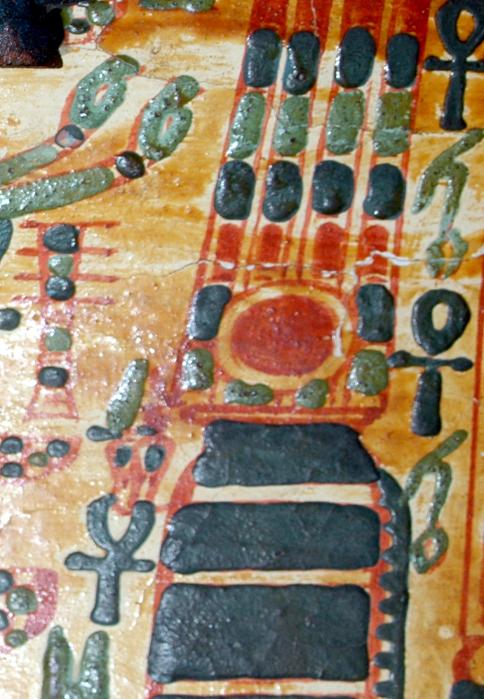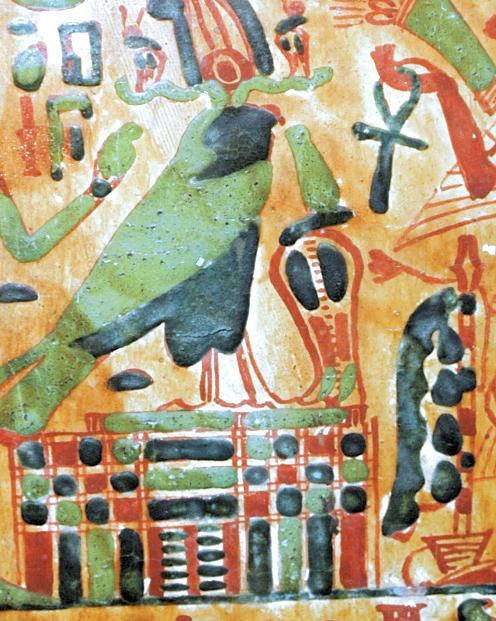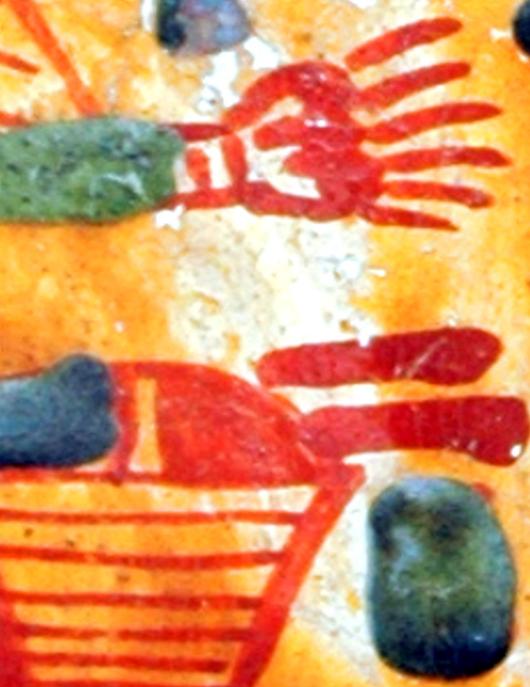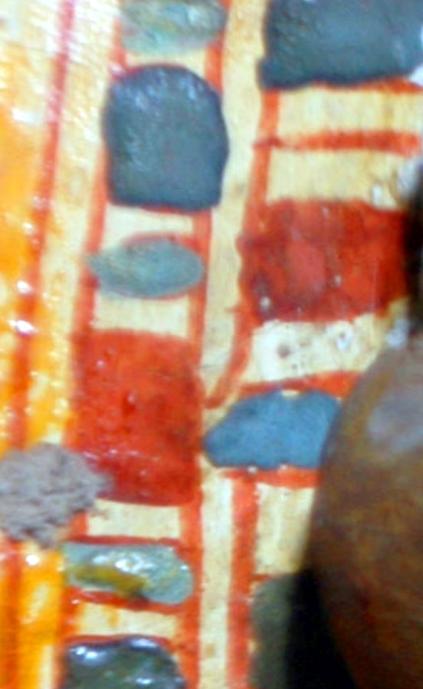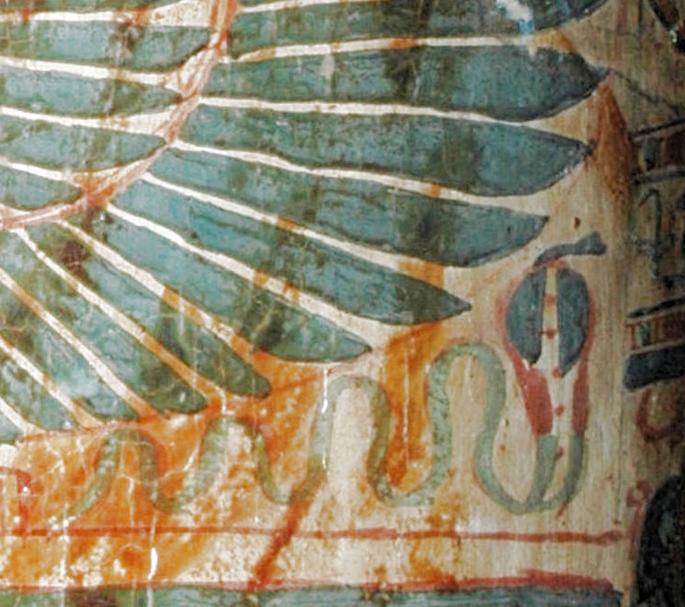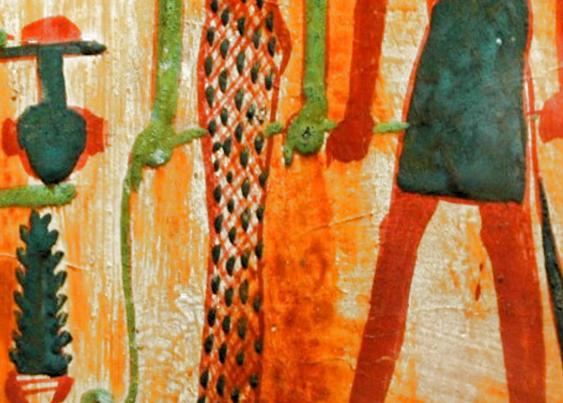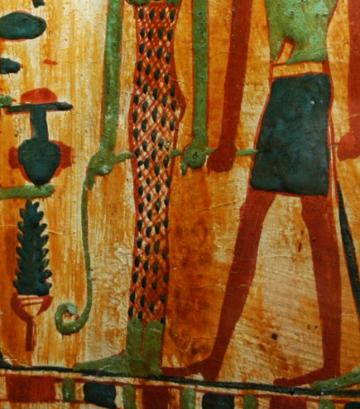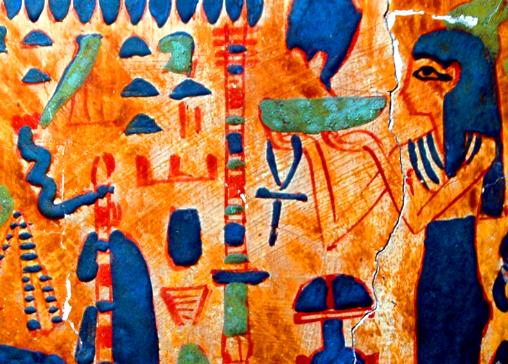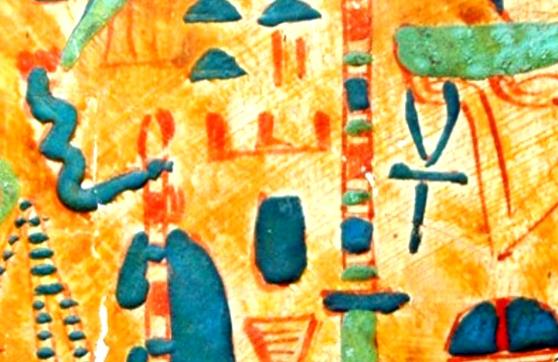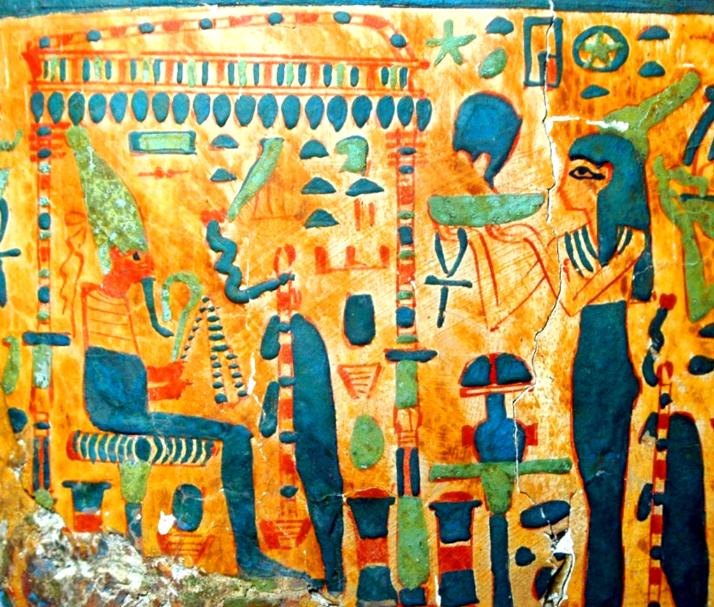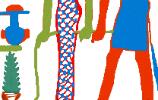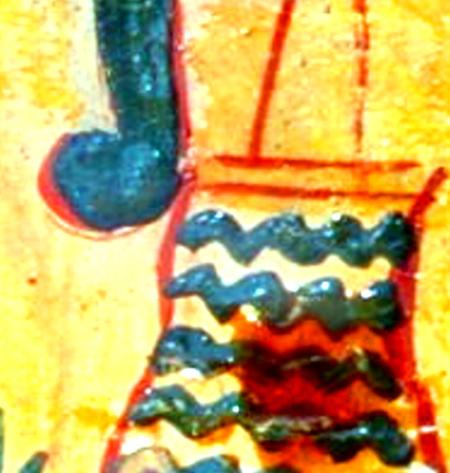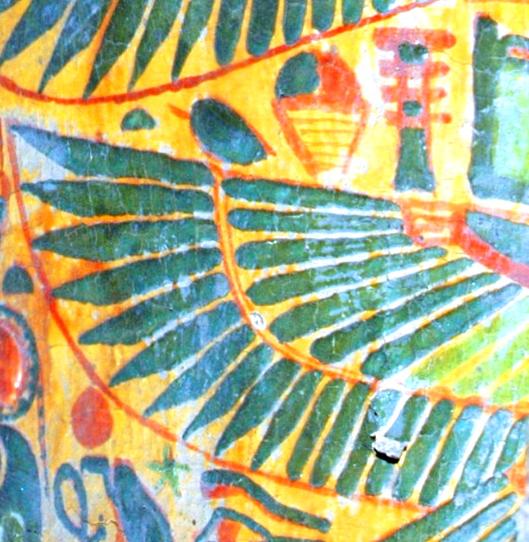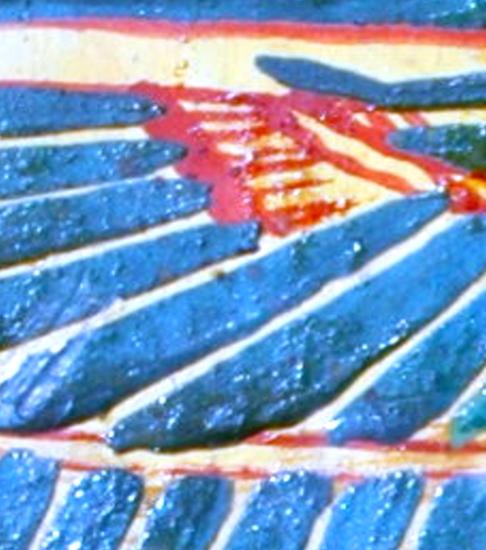| Russian Academy of Sciences Centre for Egyptological Studies, Moscow (CESRAS) & Russian Institute of Egyptology in Cairo (RIEC) Research on the Funerary Art of the 21a Theban Dynasty of Payanch and Personages of that Period (1070-945 BCE) Site Directory Personages Artifacts Iconography Deities Royal Cache TT320 Network Index |
Intellectual property of the Russian Academy of Sciences, Centre for Egyptological Studies, Moscow R.F. This material may be freely used for non-commercial, educational,
and public services applications. If you use our material, please give a credit to CESRAS, Moscow, and make a link to http://www.cesras.org. You may contact us by email:
admin@cesras.org and we would be happy to help you in any way we can. Thanks for your visit to this site and please do come again. There will always be something new!
and public services applications. If you use our material, please give a credit to CESRAS, Moscow, and make a link to http://www.cesras.org. You may contact us by email:
admin@cesras.org and we would be happy to help you in any way we can. Thanks for your visit to this site and please do come again. There will always be something new!
ACHIEVEMENTS AND PROBLEMS OF MODERN EGYPTOLOGY
Proceedings of the International Conference held in Moscow on September 29-October 2, 2009
Edited by Galina A. Belova
Digital photographic addenda to the paper THEY WERE NOT YELLOW, 21st (21a) Theban Dynasty
Edward R. Loring
Proceedings of the International Conference held in Moscow on September 29-October 2, 2009
Edited by Galina A. Belova
Digital photographic addenda to the paper THEY WERE NOT YELLOW, 21st (21a) Theban Dynasty
Edward R. Loring
HPA Pinodjem II (Paynedjem) son of HPA Mencheperraw (remains unknown) died 769 BCE, buried in TT320 beside his favorite wife,
Nesychonsw, Cairo CG61029
As the time allowed to present papers at the conference was very short and few images could be shown, I have added several
here, giving you time to examine more material more closely. Click on images for enlargements.
Nesychonsw, Cairo CG61029
As the time allowed to present papers at the conference was very short and few images could be shown, I have added several
here, giving you time to examine more material more closely. Click on images for enlargements.
An onion clearly drawn on the white gesso surface of the
coffin. Note that the green part was not effected by the
yellowing of the varnish. This is a part of a typical offering
scene. It was lightly and badly varnished. The blue side of
the offering on the basket (one side is always red and the
other blue) retains a mutating form of its original blue.
The object at lower right has started to become green,
showing us an example of the mutation process "in
action". We see here clearly that the varnish, aside from
cases of darkening due to outside causes, reacts only with
blue.
coffin. Note that the green part was not effected by the
yellowing of the varnish. This is a part of a typical offering
scene. It was lightly and badly varnished. The blue side of
the offering on the basket (one side is always red and the
other blue) retains a mutating form of its original blue.
The object at lower right has started to become green,
showing us an example of the mutation process "in
action". We see here clearly that the varnish, aside from
cases of darkening due to outside causes, reacts only with
blue.
This image gives us a quick view of the
multicoloured stripes found everywhere. Note
that the outlines are red on white. At right centre
a blue filling has escaped both the varnish brush
and physical damage, retaining its glossy blue
surface.
multicoloured stripes found everywhere. Note
that the outlines are red on white. At right centre
a blue filling has escaped both the varnish brush
and physical damage, retaining its glossy blue
surface.
This image shows a collection of the Ancient Egyptian painter's
basic colours: red, blue and green, and their interaction with a
yellow, or yellowish coating of pistacia varnish. Starting at the top
we see that the bunch of green onions remains green. The atef
crown with solar disk, rams' horns and serpents is in part mutated
and in part remains as painted. The heads and double breast
markings of serpents are conventionally "Egyptian blue", as are
the side Maat feathers of the crown. Rams' horns are
conventionally green and as all other originally green elements
have remained so. Red has remained red. The "t" at upper left is
conventionally blue. The Nephthys symbol is conventionally blue
with a blue framed red inset. The "egg" can be blue or green, but
was here given a blue border. The nTr symbol is conventionally
green. It may or may not have the originally blue markings such as
shown here. Nephthys is depicted in the green of a goddess. The
darkened portions of the falcon were blue. The green fillings at the
base of the serpent and the green surface upon which the falcon
and serpent sit are conventional. The dark surfaces of the imjut
were blue. The dias was red, blue and green. It is a variation on the
base of a common type of throne "palace
façade"
basic colours: red, blue and green, and their interaction with a
yellow, or yellowish coating of pistacia varnish. Starting at the top
we see that the bunch of green onions remains green. The atef
crown with solar disk, rams' horns and serpents is in part mutated
and in part remains as painted. The heads and double breast
markings of serpents are conventionally "Egyptian blue", as are
the side Maat feathers of the crown. Rams' horns are
conventionally green and as all other originally green elements
have remained so. Red has remained red. The "t" at upper left is
conventionally blue. The Nephthys symbol is conventionally blue
with a blue framed red inset. The "egg" can be blue or green, but
was here given a blue border. The nTr symbol is conventionally
green. It may or may not have the originally blue markings such as
shown here. Nephthys is depicted in the green of a goddess. The
darkened portions of the falcon were blue. The green fillings at the
base of the serpent and the green surface upon which the falcon
and serpent sit are conventional. The dark surfaces of the imjut
were blue. The dias was red, blue and green. It is a variation on the
base of a common type of throne "palace
façade"
Here we see a goddess adoring the Abydos-fetish.
All the dark areas were bright "Egyptian blue".
We have read above that the ankh symbol is always
blue.
The clear red lines of the draughtsman on the variant of
the double-feather crown are clear proof of a white
background.
The was staff is shown correctly in green.
The double serpent attached to the crown at middle left
supporting an ankh are Nechbet, wearing the white
crown which, analog the green sun, is generally green
in the Duat), and Wadjet, wearing the red crown.
There is no specific colour rule for the Djed-pillar. It can
be any combination of red, blue, green and white,
although not all need be present.
All the dark areas were bright "Egyptian blue".
We have read above that the ankh symbol is always
blue.
The clear red lines of the draughtsman on the variant of
the double-feather crown are clear proof of a white
background.
The was staff is shown correctly in green.
The double serpent attached to the crown at middle left
supporting an ankh are Nechbet, wearing the white
crown which, analog the green sun, is generally green
in the Duat), and Wadjet, wearing the red crown.
There is no specific colour rule for the Djed-pillar. It can
be any combination of red, blue, green and white,
although not all need be present.
Isetemkheb D (Asetemachbjt D), Cairo CG61031, sister-wife of HPA Paynedjem II
Typical proof of white background: white spaces between wing feathers
Unprocessed photo taken with
extremely poor lighting, but showing
white in net dress
extremely poor lighting, but showing
white in net dress
Lightened section showing both red draughtsman's lines in net
dress and careless varnishing which leaves the white
background all but exposed in several places
dress and careless varnishing which leaves the white
background all but exposed in several places
Original colours (click)
Clear white in necklace and barely covered white in area of kiosk
Details of the image above: notice the uneven marks of the stiff varnish brush in the hand of an untrained worker
Page 215,12g) Djedptahjwefankh Cairo CG61034, Second Prophet of Amun, family relationship not known. Buried somewhere in the
11th year of the 22nd Dynasty Tanite King Scheschonq I in usurped coffins of the 21a Dynasty. Place of initial burial not known
11th year of the 22nd Dynasty Tanite King Scheschonq I in usurped coffins of the 21a Dynasty. Place of initial burial not known
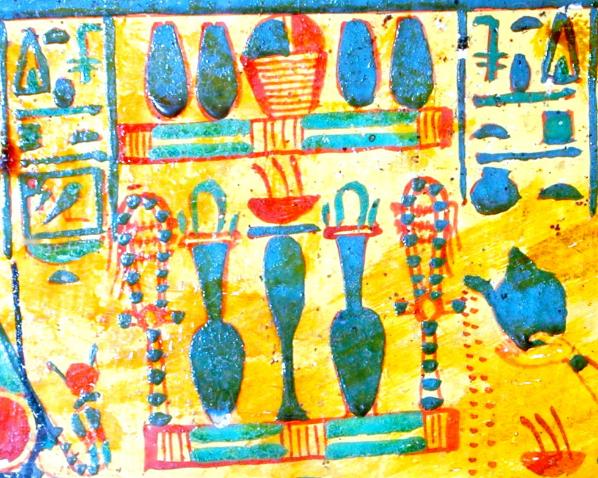
Clear white between feathers and
beside Djed-pillar at top right
beside Djed-pillar at top right
Very unusual example of a virtually unvarnished area,
showing original blue colour of feathers.
showing original blue colour of feathers.
Clear white in dress
Clear white in right sistrum, on left corner of offering plate and in rim
of solar disk at lower left. We will return to the centre of this graphic.
of solar disk at lower left. We will return to the centre of this graphic.
